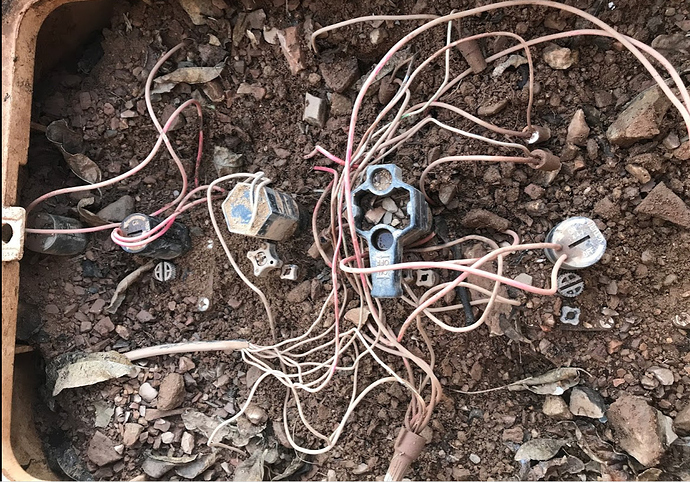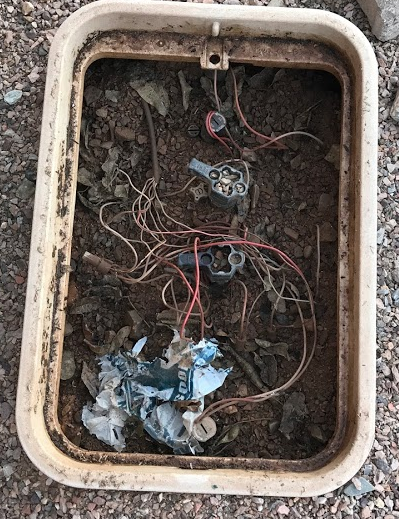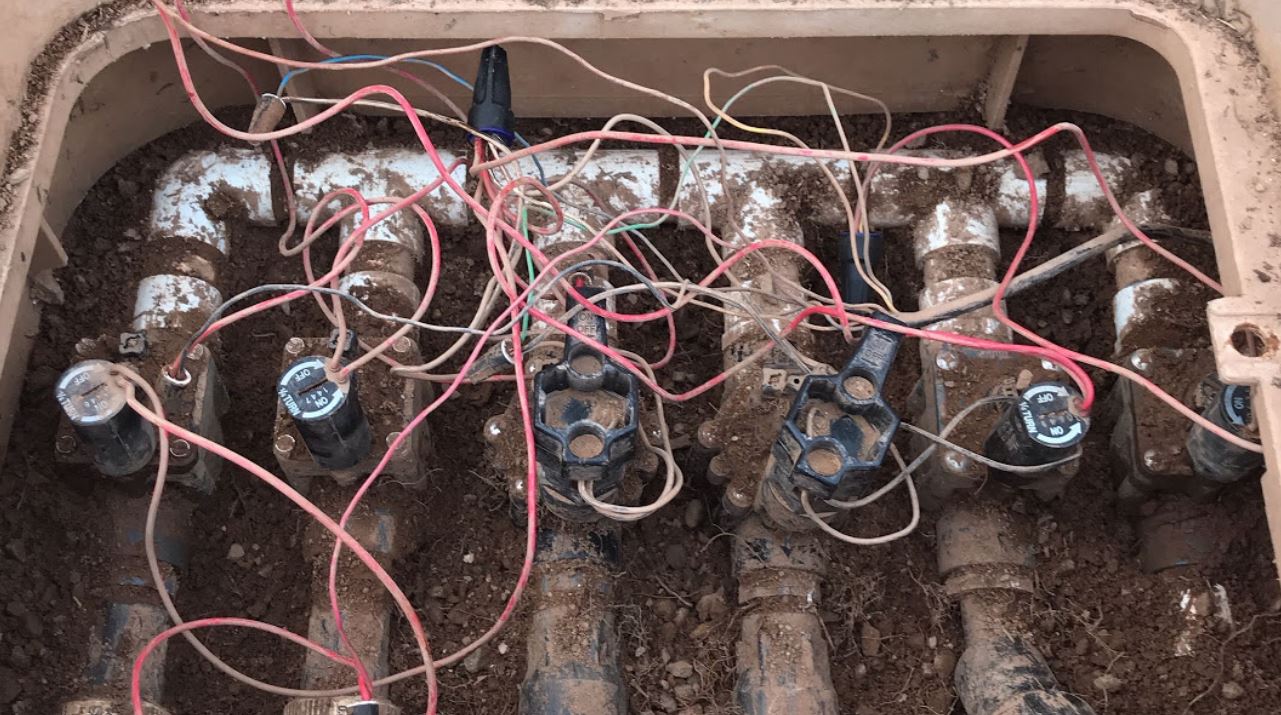I have a single tree that has 3 emitters dripping (on) even though the system is completely turned off. Seems to me that they have been on for quite some time since the tree and areas there are sunken. Any thoughts as for how to troubleshoot this? I am not an irrigation expert but willing to poke my nose into this. Thanks!
If they are slowly dripping even though the zone isn’t running, then you have a valve diaphragm that needs to be replaced. Me personally, I just buy a whole new replacement valve of the same kind in my system and replace the diaphragm, top/bonnet, and solenoid. Only thing you haven’t replaced at that point is the valve body itself, which RARELY goes bad…
Here are a couple pictures of what I have in the ground. Is this what you’re describing? Looks like I have 6 of these that twist on/off. Is there a way to figure out what “system” I have or manufacturer? Thanks for helping this newbie!
One more question: how would I know which one is the malfunctioning valve?
I found this video… Is this what you mean? Instead of cutting out the entire part and having to perform pvc pipe repair, just buy a whole replacement but use the guts to avoid the rest of the work. That is smart!
Yes! Looks like you’ve got a few different valves in your box. Going to have to do some investigating to see which valve operates the zone that is leaking. Turn on each zone manually by turning the solenoid about a 1/4 turn. Once you find the valve just replace the guts of it…
You’ll also have a little bit of clean out to do of that box. Need to get all the excess dirt out of there before you unscrew the tops of the valves.
Update: fixed! I cleaned out the dirt and uncovered everything. Then I figured out how the solenoids attach and which valve goes to each area. The valve in the picture on the far left is the culprit! I ran to Home Depot and picked up a $15 replacement, exchanged the guts, and now I believe it’s fixed. What’s interesting, is the valve all the way to the right was on the yellow cable and wasn’t attached at all! I attached it but ran out of daylight so don’t know if its a remnant or possibly was attached to the grass (when I had grass-we replaced it with fake turf).
THANKS for your help!!!
Awesome! Now that they are uncovered, the 4 outer ones look like the Hunter PGV’s, which is what I have, and are super easy to swap the guts out…glad it worked out for you!
As for the one not hooked up. Looks like there is a good chance that was a grass zone since I don’t see a pressure reducing device on it. Was that your only grass zone? The others all look to be drip zones?
Yes, we only had 1 grass zone–a very small pad of grass in the side yard (we replaced that with artificial grass). Everything else would make sense and are likely drop zones. I have identified these main zones: trees, back yard, front yard. I also have two zones that serve one plant: a plant near the garage, and one that serves a new tree that was planted. Strange! I had a former landscaper redo the irrigation 4-years ago so he likely aggregated the irrigation to the 3 main zones (but I found those extra 2 zones working for singular shrub and tree).
Very weird. If it is worth your time/effort, might make sense to bring those singular plants under one of the other corresponding zones…
I tried to Google how to bring those singular plants under one zone but failed. Can you explain how this is accomplished? My guess is that there will be a lot of digging and following irrigation lines–but even then how and where do you connect them together? Do you find the closest “other” line and then run a connection off that? Ultimately, there may be an entire set of lines tied to a valve that is in the ground but not operating?
Thanks for the advice and clarification–that will help!
Some digging, but not a ton…right out of the valve box, you can run a tee of the line you are going to keep, and tie into the other singular “zone”. I’d recommend that you remove that decommissioned valve and cap off that PVC line after you are done…
If you want to make it really easy, and don’t care about having a valve there, but don’t see the purpose of a zone for just one plant, wire them both to the same terminal on the Rachio. Assuming you don’t have a master pump, and aren’t using the “water hammer” feature in Rachio, then Rachio can power up to 3 zones off one terminal.
The two valves on ends are Hunter, two center are Rainbird DVF valves. Seems you have a mixed system.




